
table of contents
- Companion plants for grasses
- Bulb flowers
- Perennials
- More plants
- frequently asked Questions
Grasses are of great importance in the design of the home garden. But which accompanying plants can be ideally combined with grasses?
In a nutshell
- Diversity, flexibility and versatility make grasses ideal for the garden
- Bulb flowers, perennials or other plants make excellent companion plants
- popular bulb flowers to combine: crocuses or tulips
- Perennial plants: asters, ferns and coneflowers
- other suitable companions for grasses are z. B. Roses or boxwood
Companion plants for grasses
Different plants are ideal for keeping the grass in the garden company. Below you will find 15 suitable companion plants, which are divided into three groups:
- Bulb flowers
- Perennials
- more plants
Tip: Depending on the type of grass, use the right partner to significantly enhance the look of the garden. Ideally, you select the grasses and suitable plants at the same time.
Bulb flowers
Bulb flowers are a suitable partner to combine with different types of grass. These plants form a bulb underground in the ground. Compared to the flower bulb, all the necessary components are already present in the flower bulb.
Crocuses (Crocus)

- approx. 235 different types
- widespread in Europe, North Africa and the Orient
- popular as ornamental plants
- perennial and herbaceous plants
- Heyday in spring or autumn
- common colors of purple, violet, white and yellow
- Crocuses are the first spring flowers
- often prefer sun or partial shade
Daffodil (Narcissus)
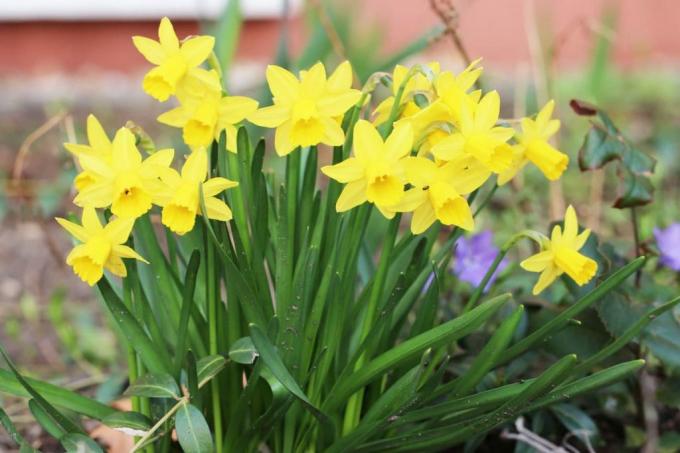
- predominate in southern Europe and northern Africa
- between 50-80 different types
- over 24,000 forms of culture
- are among the most important plants for the flower trade
- perennial and herbaceous plants
- between 5 and 80 cm tall
- different shape of the flowers depending on the species
Tulip (tulipa)

- about 150 kinds of tulips
- widespread from North Africa to Central Asia
- common ornamental plants in parks and gardens
- popular as cut flowers
- perennial and herbaceous plants
- between 10 and 70 cm tall
- Flower color varies depending on the cultivated form
Perennials
The next group of companion plants are the perennials. Particularly colorful Perennial species are suitable for a colorful, lively contrast in the garden and combine excellently with grasses.
Asters (aster)

- belong to the composites
- common in Europe and Asia
- popular ornamental plants in gardens and parks
- perennial, annual or biennial plants
- herbaceous or as a shrub
- between three centimeters and three meters
- Inflorescences together or individually
- prefer a sunny and partially shaded location
- medium content of nutrients ideal
Ferns
- Group of vascular spore plants
- the real ferns are known
- there are over 10,000 species worldwide
- widespread in tropical locations
- in Europe there are between 100 and 200 species
- prefer shady and moist locations
- partly used as ornamental plants
Lady's Mantle (Alchemilla)

- Plant genus from the rose family
- distributed almost worldwide
- approx. 300 species native to Europe
- only a few specimens popular as an ornamental plant
- deciduous or persistent
- herbaceous plants or subshrubs
- small flowers of green or yellow color
Hosta
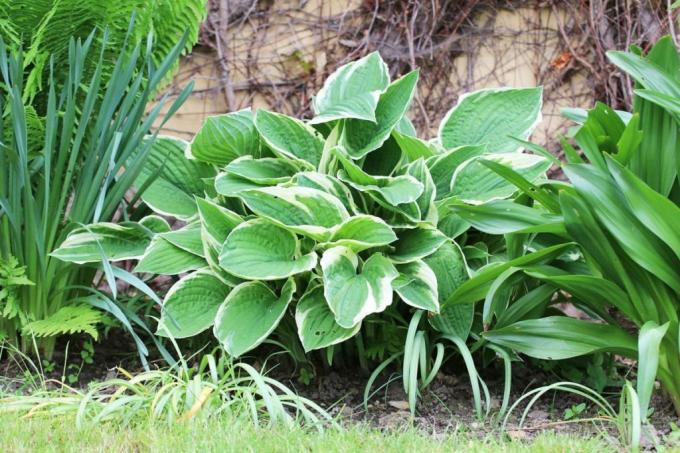
- belong to the agave family
- common in Asia
- perennial and herbaceous plants
- hardy perennials
- undemanding plants that can be ideally combined
- Perennials come in different colors
- many varieties of vegetative distribution
Purple bells (Heuchera)

- over 30 different types
- spread from Canada to Mexico
- evergreen and persistent
- herbaceous plants up to 145 cm in height
- 100 to 1000 flowers
- popular colors are cream, yellow, pink or red
Rudbeckia (Rudbeckia)

- approx. 20 different types
- common in North America
- some specimens of popular ornamental plants
- annual, biennial or herbaceous perennials
- up to 300 centimeters
Coneflower (echinacea)
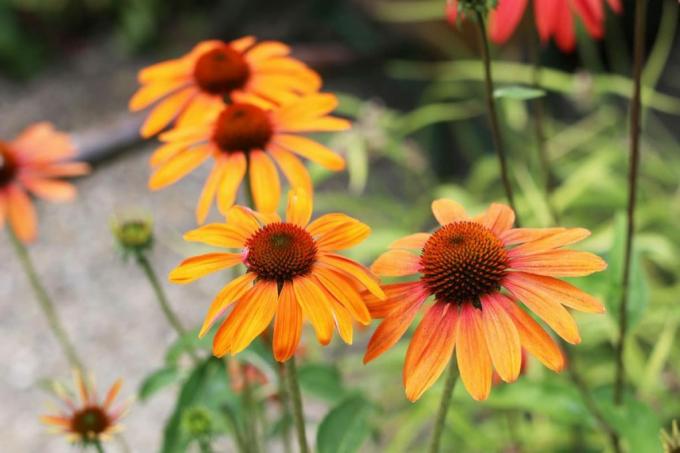
- belong to the composites
- native North America
- persistent and herbaceous
- up to 140 cm tall
- Flowers are solitary
- known as an ancient medicinal plant
More plants
At the same time, there are other plants that combine well with grasses and with which you can complement your garden in a meaningful way. In the following section there is a colorful mix from boxwood to rose.
Boxwood (Buxus sempervirens)
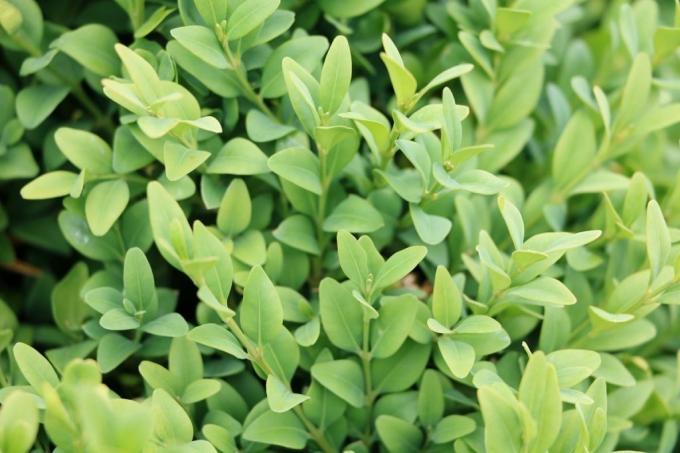
- common boxwood native to Europe, North Africa and West Asia
- slow growth
- evergreen shrub and rarely a small tree
- grows up to 20 meters (subtropical climate)
- yellowish clusters of flowers between March and May
- prefers oceanic climate
- sunny location
Japan sedge (Carex morrowii)

- uncomplicated ornamental plant
- comes from Japan
- prefers clear spaces and damp locations
- up to 40 cm high
- flowers inconspicuous between April and June
- partially shaded to shady location
- protected from wind
- fresh and moist soil with lots of humus and nutrients
- adequate watering is important
Ball leek (Allium sphaerocephalon)
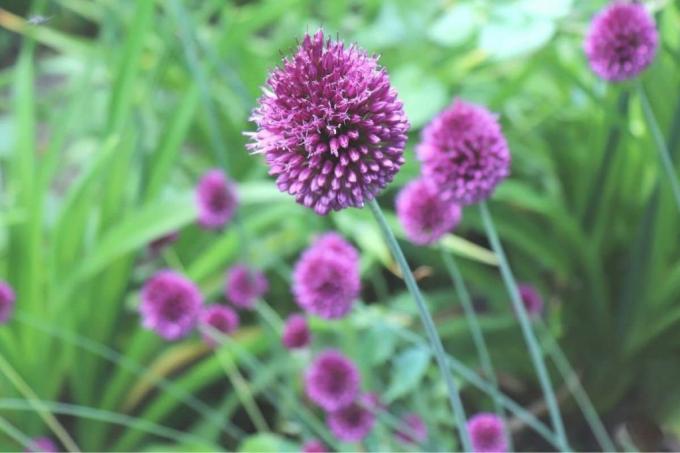
- leek ornamental plant
- common in the Mediterranean region
- prefer dry and semi-dry race
- up to 90 cm high
- Leaves dry up quickly
- popular with bees and bumblebees
- ideal for environmentally friendly combinations
- prefers a sunny location
- Soil moderately dry and rich in humus
- Planting between October and November
Rose (pink)
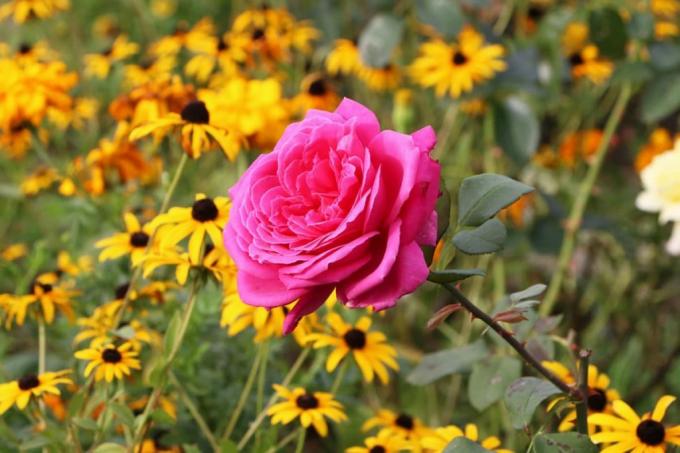
- between 100 and 250 species
- especially Holarctic distribution
- divided into wild and cultivated roses
- Ornamental plants for over 2000 years
- up to four meters high
- deciduous shrubs
- thorny plants
- open location with sufficient light
- depending on the type of fresh or dry soil
- often at the edge of the forest
- not a nitrogen-rich location
Star umbel (Astrantia)

- persistent and herbaceous
- simple pinnate leaves
- unbeaked fruit
- only 10 different types
- common in European forests
- partially shaded location with moist air
- Pouring important
- prefer humus and nutrient-rich soil
frequently asked Questions
Grasses are an important part of planning your home garden. The plants are very popular because they can be used almost anywhere. Some specimens prefer a sunny spot, while other species love the shade. There is a suitable choice for almost every garden situation.
Different plants have different needs. At best, these should complement each other so that all plants in the garden receive sufficient nutrients. Consequently, when choosing the type of grass you should always make sure that the right accompanying plants are available.
Grasses give the garden a natural look. The stalks move slightly in the wind and exude a natural flair. The grasses also change their appearance over the course of the year. The plants enjoy great popularity as privacy protection and visual enhancement.



